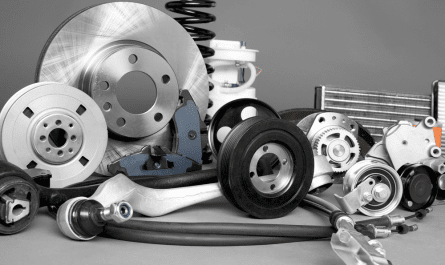We are at the cusp of a transportation revolution as vehicle electrification is poised to reshape personal mobility in the coming decade. The internal combustion engine (ICE) that has dominated road transportation for over a century is being challenged by electric powertrains that promise lower operating costs, zero emissions, and a smoother driving experience. Let us explore some key aspects of this ongoing transition to electric vehicles (EVs).
The Rising Popularity of EVs
EV sales have grown exponentially in recent years as battery technology advances and more models become available in the market. A growing number of households and fleet owners are opting for EVs due to attractive purchase incentives offered by several governments worldwide. According to industry estimates, there were over 10 million EVs on roads globally by the end of 2021 representing a four-fold jump from three years ago. Leading markets like China, Europe and the United States have ambitious targets to accelerate EV adoption and phase out ICE vehicles in the coming decades.
Automakers are Pivoting to EVs in a Big Way
In response to surging demand as well as looming bans on ICE vehicles, all major automakers are aggressively investing in electrification of their lineups. Legacy brands like Ford, GM and Volkswagen plan to offer over 50% of their model range as EVs by 2030. Meanwhile, EV leader Tesla continues to expand globally with new factories coming up in locations like Germany and India. Startups like Rivian and Lucid Motors are mass producing attractive electric SUVs and sedans that are giving traditional automakers a run for their money. In the commercial vehicle segment too, manufacturers are rolling out electric solutions for delivery vans, trucks as well as public transportation buses.
Battery Technology is Evolving Rapidly
Perhaps the biggest technological hurdle in the mass adoption of EVs has been the battery. However, battery energy density and efficiency have improved tremendously with continuous R&D into new chemistries and cell designs. The latest lithium-ion batteries can now deliver over 300 miles of range on a single charge with manufacturing costs reducing significantly. Meanwhile, solid-state battery technology that promises even better performance is inching closer to commercialization. Governments and companies are investing billions into local battery manufacturing to create regional supply chains. Over-the-air software updates are helping extend battery health and driving range over the lifespan of EVs.
Expanding Charging Infrastructure
Equally important as the Vehicles Electrification themselves is building out a convenient public charging network. While the majority of charging will happen at homes and workplaces using level 1 and level 2 chargers, a robust fast-charging network spanning highways and public places is important to alleviate range anxiety. Several countries are deploying hundreds of DC fast chargers per month along major roadway corridors. Meanwhile, leading automakers and energy companies are collaborating to establish a unified network of high-powered chargers across North America and Europe using standardized connectors. Over time, vehicle-to-grid (V2G) technology will allow EVs to feed stored energy back to the power grid helping integrate renewable energy sources better.
Greenhouse Gas Emissions Reduced
A key driver of the global EV transition is the promise of lower emissions over the full vehicle lifecycle compared to gasoline or diesel cars. Even when accounting for manufacturing and power plant emissions, EVs recharged using average grid electricity produce less than half the greenhouse gases of a comparable gasmobile. And the emissions gap widens substantially in regions with cleaner power sources like hydro, nuclear or renewables. Studies indicate that electric cars need to replace only a small fraction of ICE vehicles to significantly curb transportation sector CO2 emissions. Fleets stand to benefit the most from the operational cost savings and sustainable credentials that EVs provide.
Residual Value and Maintenance Costs
Another crucial factor influencing total ownership costs is the projected value retention and repair expenditures over several years of driving. While the upfront prices of EVs are still generally higher than combustion models, their simplicity means far fewer moving parts that are subjected to wear and tear. This translates to lower scheduled maintenance and fewer trips to the garage. Furthermore, battery and electric motor warranties offered by automakers often surpass 100,000 miles showing confidence in modern EV components. With demand outstripping supply currently, residual values of EVs hold up very well after 3-4 years. These savings offset the larger initial investments to an extent.
As nations strive to achieve carbon neutrality goals by mid-century, vehicle electrification presents one of the most viable pathways towards sustainable transportation. While EVs may still have some challenges to overcome, most industry experts agree that the electrification of personal mobility is inevitable over the next 10-15 years – earlier in leading markets. Ongoing technological progress, supportive policies, evolving consumer mindsets as well as the actions of automakers leave little doubt that the future of road vehicles will be increasingly electric. The internal combustion engine’s reign looks set to end sooner rather than later as a newer, cleaner and more efficient paradigm takes over global vehicle fleets.
*Note:
1. Source: Coherent Market Insights, Public sources, Desk research
2. We have leveraged AI tools to mine information and compile it




